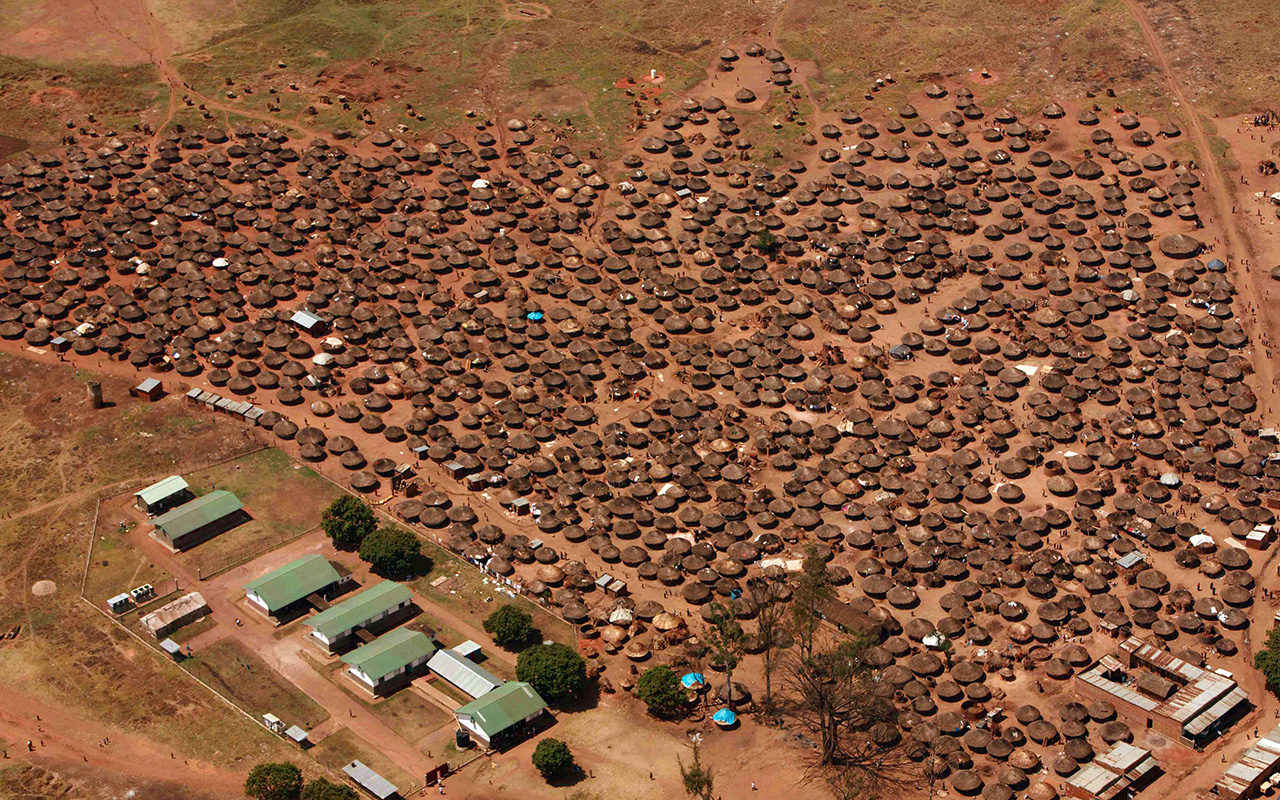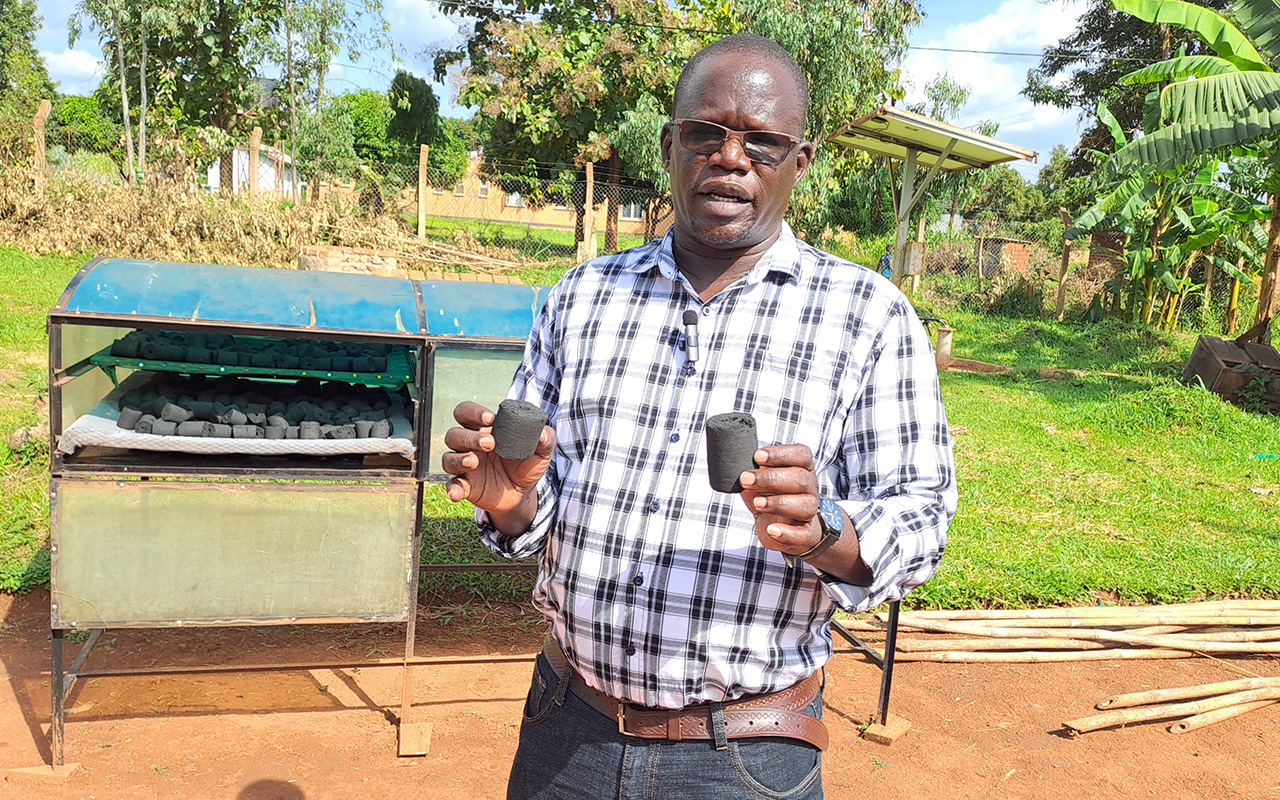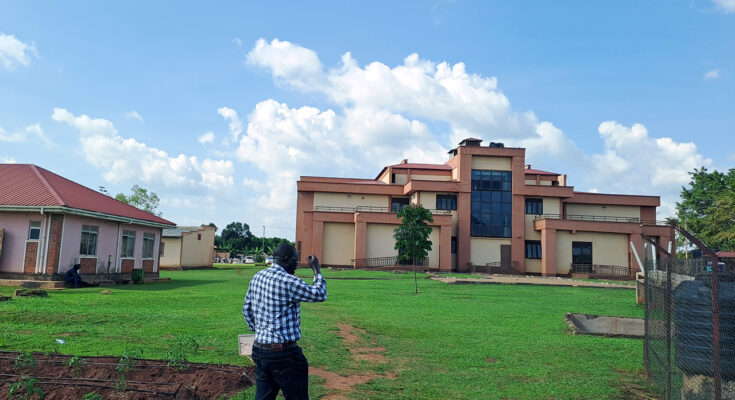The two decades of war waged by the Lord’s Resistance Army (LRA) in northern Uganda had a profound effect on the civilian population. This war, marred by extreme brutalities was characterised by abductions, torture, sexual violations, displacements and untold suffering among victims led to civilians being moved and resettled in internally displaced people’s (IDPs) camps. Farming was thus abandoned and the people had to survive on the food distributed by the World Food Programme.
The forests were inaccessible and civilians risked the wrath of armed forces should they be spotted in the bushes. Soldiers used this opportunity to cut down trees and sell them for timbers. Some investors also seized the moment by paying off the soldiers to offer them protection while they cut down the trees.

By the time the last of the IDP camps closed in 2005, charcoal business was widespread in the region. People came from different parts of the country and bought forest lands for this purpose. Nwoya district, a land with so much vegetation, faces the danger of turning into a semi-arid area as forests are being destroyed in the name of charcoal burning. Heavy trucks can be spotted on the Gulu-Kampala highway so loaded with sacks of charcoal.
Dr. Collins Okello, the Dean Faculty of Agriculture and Environment at Gulu University believes that this region is the charcoal hub of the country. “Available records show that northern Uganda contributes almost 40% of the charcoal to urban areas of Uganda and this has caused a lot of problems on the environment. We’re also losing a lot of tree species,” he said.
Some local NGOs and district officials have tried to intervene but being compromised is inevitable as the business has continued to thrive. The latest attempt has been the Executive Order No. 3. in which President Yoweri Museveni banned charcoal business in the region. However, the high level of poverty among the locals has made this business the most feasible approach in struggling to provide for their needs, making it impossible to get rid of the trade.
With the level of indiscriminate cutting down of trees by the dealers, the region is losing forest cover at an alarming rate. Experts worry that if left unchecked, this could harm biomass and worsen climate change as more and more carbon that would have been trapped by these trees are released into the atmosphere.
According to Energy Transition, a global organisation working on energy transition, Uganda lost 23% of its tree cover between 2000 and 2020. Access to clean cooking in Uganda is as low as 5% which has prompted numerous NGOs, initiatives, state agencies, and companies in Uganda’s energy sector to encourage energy-efficient stoves, biogas stoves, electric cooking solutions, and solar cookers.
It is against this background that Gulu University, a tertiary institution that prides itself in community transformation, decided to intervene. Under its faculty of agriculture, the university is implementing a 4-year project dubbed ‘Unlocking the Potential of Green Charcoal Innovation in Northern Uganda (UPCHAIN) led by a team of lecturers and students.
The innovation
According to Dr Atube Francis, a lecturer in the Department of Science Education – agriculture, this project promises to introduce what they call green charcoal in the local markets to replace the so-called black charcoal.
“We think the reason why we are experiencing the effect of climate change so drastically in northern Uganda could be partly because of the rampant unsustainable destruction of the forests that used to be properly seen in northern Uganda,” he said. Such forests, include Abera Forest, about 10km from Gulu City which has completely been destroyed due to lumbering and charcoal burning.
This innovation uses agricultural residues like rice husks, groundnut husks, maize cobs, cotton stalks, and any agricultural residue that would normally be thrown out or collected and burned in different parts of the city to produce briquettes that are given the specific name of green charcoal.
“We are calling it green charcoal not that the charcoal looks green but because we’re using crop residues basically to fight the effects of climate change and we think it is friendly to the environment, and also it helps in disposing of the agricultural residues that litter our cities,” Dr. Atube notes.
The process
The green charcoal machines are fabricated locally by students pursuing their degrees in engineering from Gulu University. These machines include a carbonizer, a crusher, a mixer, an extruder and a solar dryer – all of which work in a sequence. The carbonizer is a drum-like machine that burns the agricultural residues under limited oxygen to produce charcoal. The charcoal is then allowed to cool.

After cooling, the charcoal is transferred to the crusher, which crushes the carbonized materials to form small particles. The crushed material is then transferred to a mixer that mixes the particles with a binder. A binder is a starchy substance made from cassava, clay or molluscs.
The bonded particle is then soaked in water and put in an extruder, a machine that uses a motor to produce the green charcoal in different shapes depending on the intended shape and design. The produced pieces of green charcoal are then transferred to the solar dryer where they are dried for 2-3 days before they’re ready for use.
Advantages of the green charcoal
Unlike the usual black charcoal, the green charcoal is so clean that one does not have to worry about making their hands dirty after touching them. They have uniform shapes and are smooth on the outside, giving the hand a good feel.
Another of its good qualities is that it emits less smoke. This reduces the risk of inhaling smoke during cooking which is a health hazard causing respiratory problems. One does not require many pieces of the green charcoal to cook a meal. This reduces cooking time because it produces more heat than the black charcoal.

Dr. Atube believes that a sac of green charcoal is able to last for more than a month in an urban household. This means that the green charcoal is going to be able to save these households money that can be diverted to other pressing needs such as health care and education.
Laker Franka, one of the few locals who have tested the green charcoal, said it will improve lives because it burns longer, is cleaner than wood, and saves them money and time. “The charcoal reduces the smoke and other problems associated with wood fuel, such as eye irritation. We request them to start making more and selling to us,” she said.
Sustainability
The four-year project which is being implemented in the three districts of Gulu, Amuru and Adjumani is being funded by the Danish International Development Agency (DANIDA) through the DANIDA Fellowship Center (DFC).
Adjumani is being targeted because it hosts refugees from across the East African region. “Refugees in Adjumani have a lot of conflicts with the host community and the cause of this conflict is the issue of fuel used for cooking. The refugees are given food by UNHCR and these other organisations but they don’t give them fuel for cooking,” says Dr. Atube. “So we are thinking if we train the host community, and the refugees to start producing this green charcoal by themselves the conflict is going to go down.”
To this point, the project has not yet been rolled out to the communities. The university is in the final stages of conducting market research and receiving feedback from the communities and the different stakeholders.
Even in the initial stages, the university is now able to produce 40kgs an hour, making 320kgs in a day over the 8-hour working period. It is expected that 1kg of green charcoal will sell at 1,000shs. Thus, it’ll be much cheaper than the black charcoal, something the university believes will be used to sway the public away from black charcoal.
The production of the green charcoal has also become a subject of study by university students who are pursuing their master’s degrees and PhD by conducting their research on the quality of these briquettes and their impact on society.
The project is divided into six working groups with different backgrounds that look at the technology, gender and cultural issues, business aspect, educational aspect through influencing curriculum development, mapping of resources by using technology to identify where raw materials can be got and the sustainability aspect.
Beyond the four years of funding, the university intends to produce a high-quality product that will capture the market and do away with black charcoal. The project will also employ many as entrepreneurs are being trained and supplied with machines for making green charcoal. Local artisans are also being trained to fabricate the machines from within.
Once fully embraced by the community, the UPCHAIN project is expected to not only curb the rampant cutting down of trees for commercial charcoal burning but also manage waste by transforming agricultural residues into green charcoal that will be used in homes. It will also encourage crop production among the locals to supply residues to the entrepreneurs owning the green charcoal business.
The lead partner in the project is Aalborg University, University of Copenhagen in Denmark as well as Gulu University which is the local partner in Uganda. Other partners include Amuru District Local Government, Adjumani District Local Government, the Office of the Prime Minister, Ministry of Energy, Appropriate Energy Technologies Ltd based in Soroti and the Uganda National Council for Higher Education.

